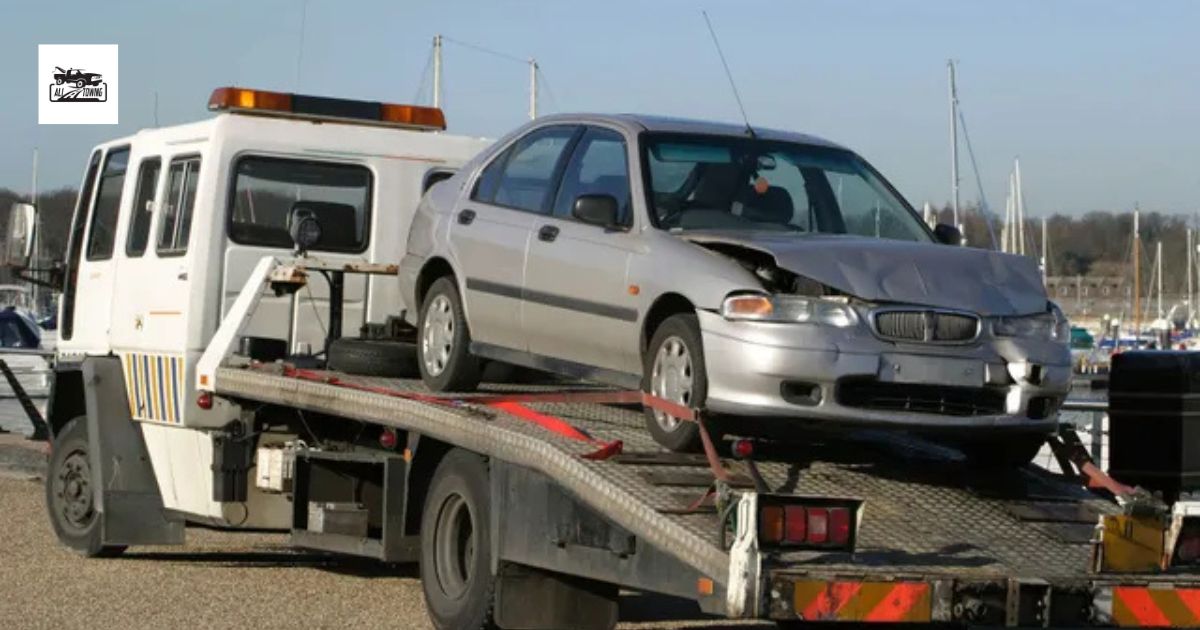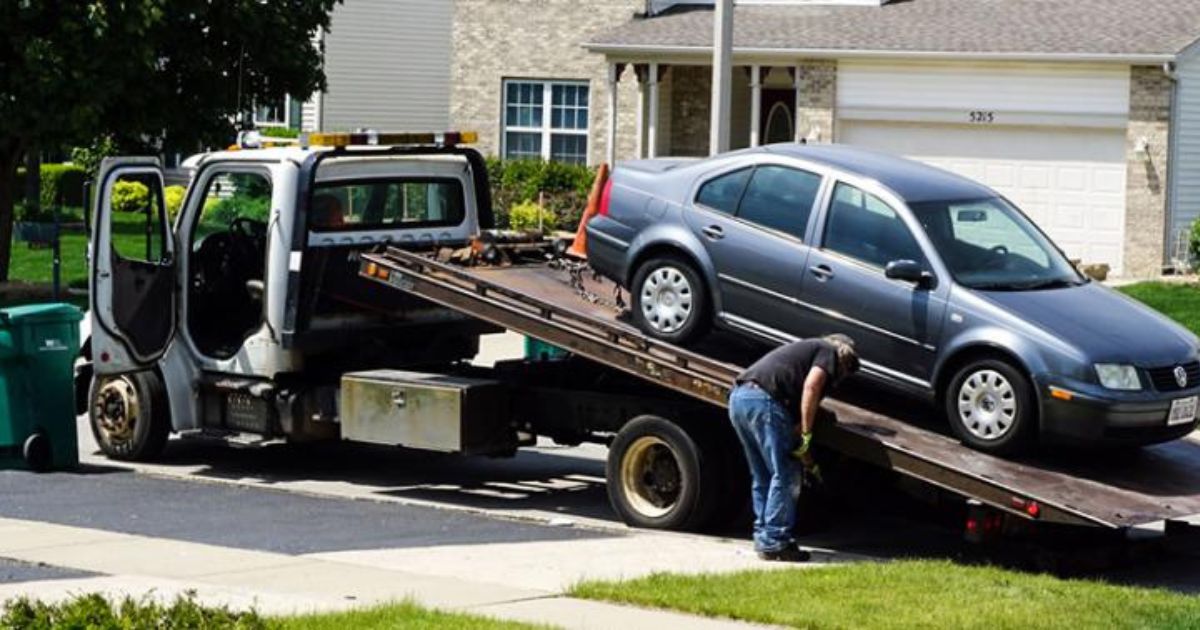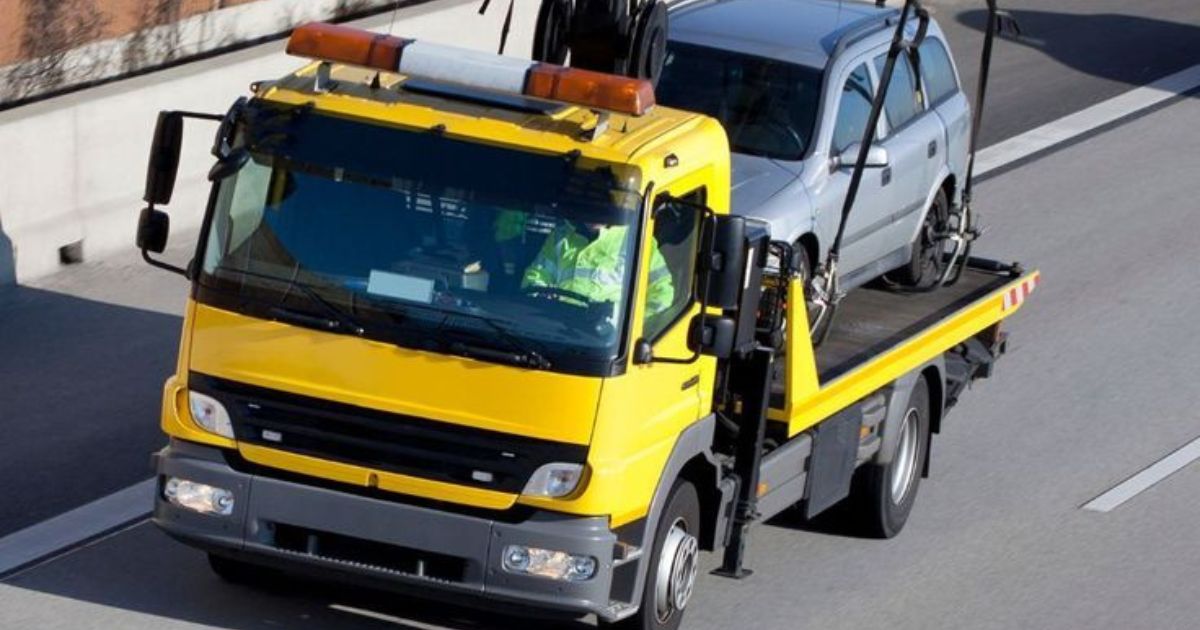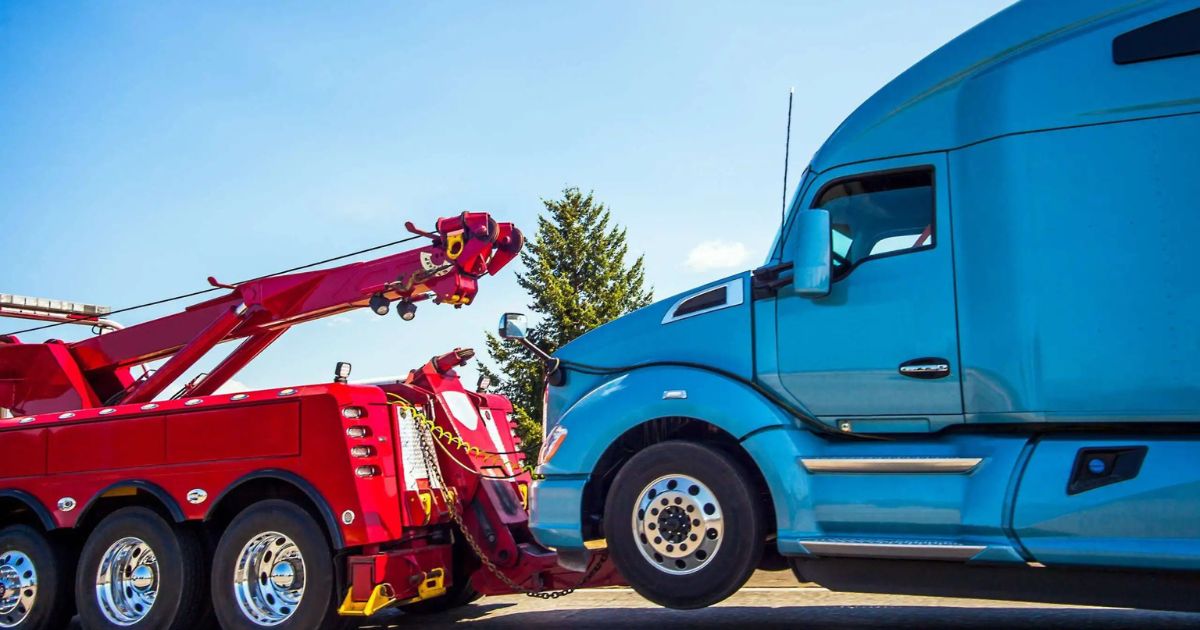You never know when you will need to learn how to jump start the car. A dead battery can strike anywhere. This guide will help you do it safely. You will also know when to call a professional towing service. Let’s start with the basics.
How to Jump-Start a Car Yourself
- Park both cars close, but not touching. Turn them off and set the parking brakes.
- Pop the hoods and find the batteries. Remove covers if they’re in the way.
- Differentiation: red is usually + positive and black is negative.
- Check that the points of connection are neat and not slathered in muck and corrosion.
- Clips are usually red, and you should place the red clip on the positive terminal of the dead battery first.
- Attach the other red clamp to the positive terminal on the working battery.
- Now, connect the black clamp to the negative terminal of the good battery.
- Take the last black clamp and hook it onto bare metal on the dead car—somewhere solid and unpainted.
- Start the good car and let it idle for a couple of minutes.
- Try starting the dead car. If it doesn’t fire up right away, wait a bit and try again.
- In case the setup is working, take off the cables in the reverse order: black from the metal, black from the good battery, red from the good battery, and red from the revived battery.
- In case rescued, let the car run for 15–30 minutes to charge the battery on which the car gets recovered or, alternatively, you have the option of taking the car for a drive.
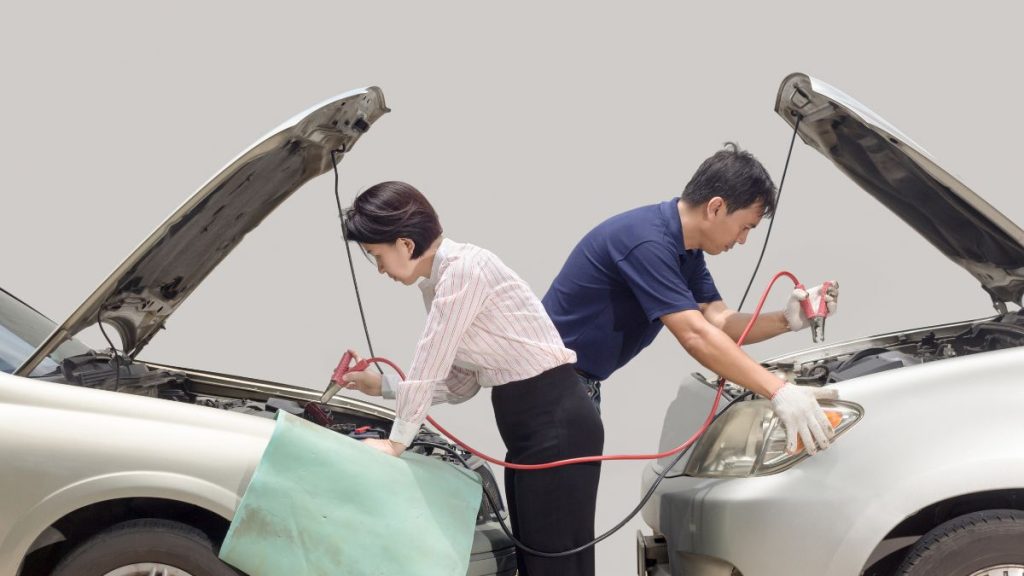
Quick Facts You Should Know
Car batteries fail for many reasons. Cold weather, age, and lights left on are the most common. Modern cars have heavy electronics that drain faster. Roadside assistance calls are rising worldwide each year. In 2024, the global roadside assistance market was worth about $17.1 billion.
Mini Data Box
- Dead batteries are a top roadside issue.
- “Side of road” events fell 11% share in 2024.
- Most drivers face a dead battery once every three years.
What You Need Before You Start
Before you learn how to jump start the car, gather tools. You need good cables or a portable jump starter. You need a second vehicle with a healthy battery. Gloves and glasses are useful for safety. Check your car manual for battery locations.
Tools and Why They Matter
| Tool | Why it matters |
| Jumper cables (thick gauge) | Thick wires carry current better. |
| Second car or booster pack | Provides the needed power supply. |
| Gloves and glasses | Protect you from sparks or acid. |
| Wire brush or rag | Helps clean corroded terminals. |
Safety First, Always
When exercising this principle, think far and wide. Do not attempt to jump a cracked, leaking, or frozen battery. Always make sure that both cars are parked on level ground. Brake both cars firmly and put them into park. Sections of jewelry should be taken off, and, of course, make sure that the clamps do not touch.
The Correct Cable Order (The Big Deal)
Cable order matters most when learning how to jump-start the car. Wrong steps can cause sparks or damage. Follow this sequence every time:
- Attach the red clamp to the dead battery positive (+).
- Attach the red clamp to the donor battery positive (+).
- Attach the black clamp to the donor battery negative (–).
- Attach the black clamp to clean, unpainted metal on the dead car.
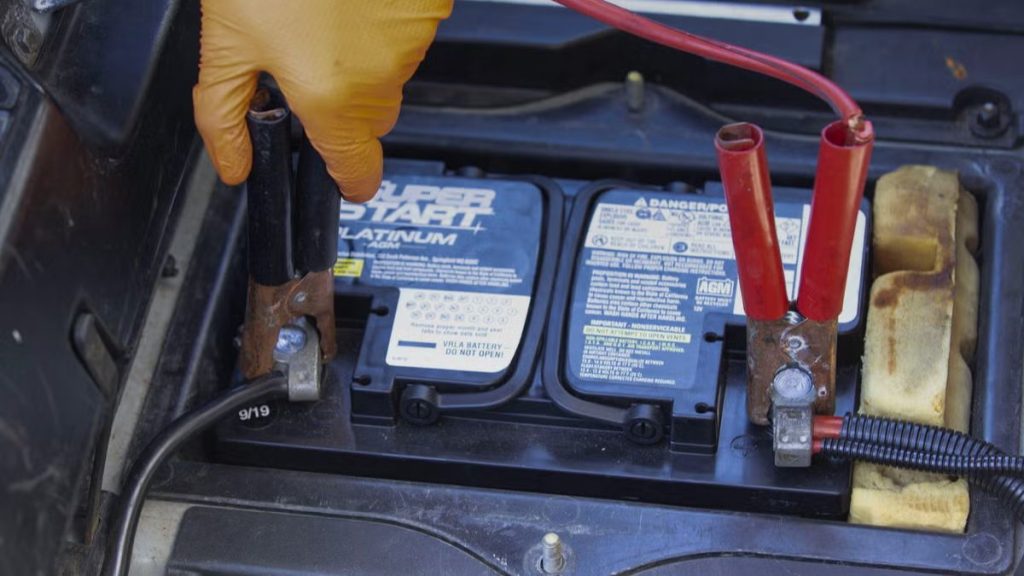
Cable Order Cheat-Sheet
| Step | Clamp | Goes on |
| 1 | Red (+) | Dead battery positive |
| 2 | Red (+) | Donor battery positive |
| 3 | Black (–) | Donor battery negative |
| 4 | Black (–) | The engine of a dead car |
Start, Wait, Try, and Disconnect
Now you are ready to try. Start the donor car and let it idle for a few minutes. This helps charge the dead battery slowly. Try starting the dead car for up to ten seconds. If it fails, wait two minutes and try again. Disconnect cables in the reverse order.
How Long to Run or Drive Afterward
After success, do not shut the car off immediately. Run the engine for at least 15 to 30 minutes. A longer drive recharges the battery faster. Driving is better than idling for battery recovery. If the car stalls again, the battery may be too weak.
After-Jump Running Guidance
| Source | Time suggested |
| J.D. Power | About 30 minutes run time |
| Repair guides | 15–30 minutes recommended |
| Parts experts | 10 minutes idle minimum |
If It Still Will Not Start
Sometimes it still fails after multiple tries. A rapid clicking sound means low voltage or weak cables. Silence can mean a starter issue. If the car stalls after starting, the alternator may be weak. In this case, stop and call a professional towing service like Ali-Towing.
Portable Jump Starters vs. Cables
Learning how to jump start the car also means knowing modern tools. Portable jump starters are quick and easy. They remove the need for a second vehicle. They must stay charged to work when needed. Pick one that matches your engine size.
Pros of Jump Starters
- Small and easy to carry.
- Work anywhere, no second car needed.
- Many have built-in lights and USB ports.
EVs, Hybrids, and the 12-Volt Truth
Even if you know start the car, electric vehicles are different. EVs and hybrids also have 12-volt systems. You only jump the 12-volt battery, never the main pack. Some EV makers warn not to jump another car. Always check your manual before trying.
Mini Data Box
- Only 4% of AAA EV calls in 2024 were “out of charge.”
- Most EV roadside calls came from tire issues.
Common Mistakes That Damage Cars
Common mistakes include mixing up clamps and terminals. Many clamp the last black cable to the dead negative post. That sparks and can harm the battery. Some pull off cables too soon after a start. Others drive without tightening loose terminals.
Cold Weather and Corrosion Tips
Winter makes car batteries weak. Cold slows chemical reactions inside the battery. Clean corrosion with baking soda and a wire brush. Always tighten loose clamps before you attempt a jump. Turn off all lights, fans, and radios to reduce load. Consider a new battery after repeated failures.
Tiny Troubleshooting Flow
Here’s a simple guide if your car still fails:
- Lights dim and click? The battery is likely weak.
- Cranks slow, then dies? It could be alternator trouble.
- Starts then stalls? Fuel or charging issue.
- No crank, no dash lights? Check main fuses.
- Battery swollen or smells bad? Do not jump.
When to Stop and Call a Professional
You now know how to jump start the car, but safety matters most. Stop if you see leaking or swelling. Stop if clamps spark badly or heat up fast. Stop if strong sulfur smells rise near the battery. Do not keep trying after several failed attempts. At that point, call Ali-Towing for safe help.
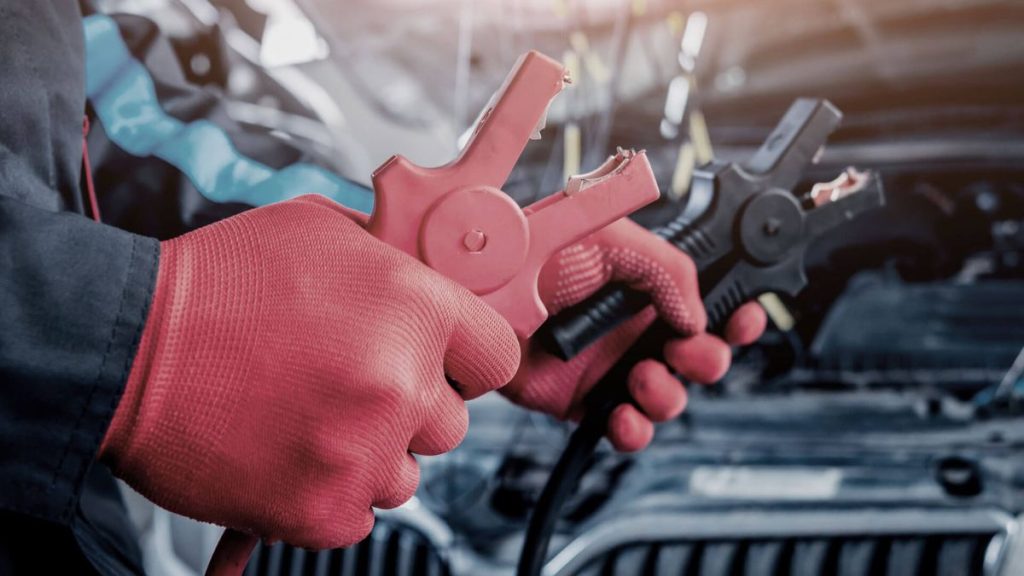
Local Help from Ali-Towing
Ali-Towing provides roadside assistance in Maryland and California. We serve Halethorpe, Glen Burnie, Columbia, Laurel, Ellicott City, and Stevensville. We also serve El Cajon, California. Our team handles jump-starts, tows, and battery checks daily. Call us for fast, safe, and professional help.
How to jump start the car safely?
To jump start safely, connect cables in the right order: red to positive, black to negative and ground. Make sure both cars are off, wear safety gear, and never let the clamps touch.
How long should I run my car after a jump?
After a jump, let the car run or drive it for 15 – 30 minutes. This lets the alternator do its job and charge the battery. Driving is better than idling because it helps the battery gain power faster.
Can I use my EV to jump start another car?
Most EVs and hybrids use a 12-volt system for support. Many makers say not to jump another car with it. Always check your car’s manual before trying. Wrong steps can harm the battery or sensitive systems.
Why does my car not start even after a jump?
If a car will not start, the reason might not be limited to the battery alone. The magnetic field of the motor might be weak, or the alternator or the starter could be broken, or there might be a blown fuse; the least of these can stop the engine from functioning.
Can jumping start damage my car?
Yes, it can if cables are connected incorrectly or clamps touch. A power surge can harm the alternator or computer system. Always follow the right cable order and safety rules to keep your car safe.
Conclusion
Now you understand exactly how to jump start the car and when to stop. With the right steps, it is simple and safe. Yet, not every battery will respond, and forcing it can damage parts. When that happens, roadside professionals like Ali-Towing are ready to help. Call us for expert support anytime.



